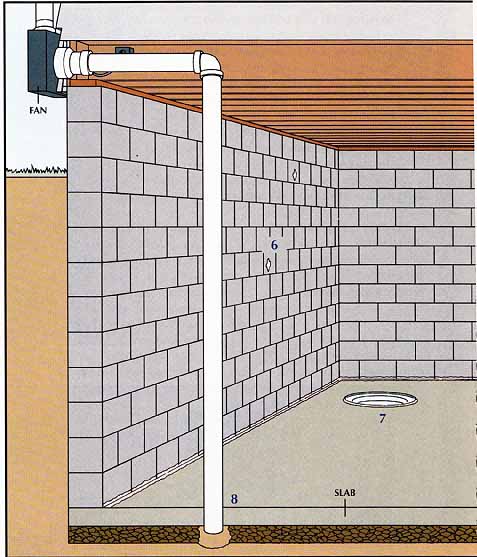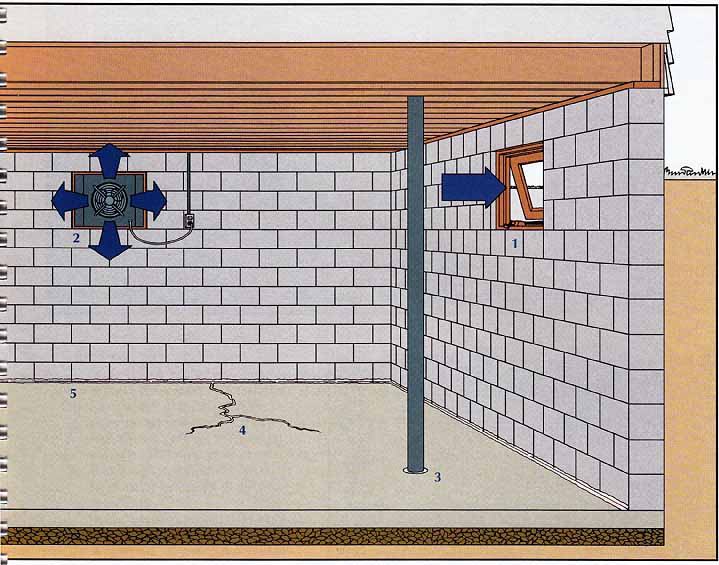Radon, a radioactive gas, results from the breakdown of uranium in water, rocks, and many types of soil. It typically rises through the earth and disperses harmlessly into the atmosphere, but it also passes through openings in a house’s foundation and accumulates in living areas. If such concentrations grow too high, they can be dangerous; indeed, radon is a leading cause of lung cancer in the United States.
Test Kits: Since the gas is odorless, tasteless, and invisible, the only way to determine how much is in a house is to test for it. Homeowners can either call in a contractor to do this or administer one of the short-term test kits available at home-supply stores.
A kit consists of a radon collector, a seal, and a mailing container. Position the collector in a draft-free spot in your home’s lowest lived-in level, and let it sit for 2 to 4 days. Then seal the collector and mail it to the laboratory specified by the manufacturer.
The lab will send a report outlining the amount of radon in your house. If the level is higher than 4 picocuries per liter—10 times the concentration in the outside air—administer a second test using either a short-term kit or one that remains in your home for 90 days. If the long-term test or the average of the two short-term tests equals or exceeds the initial reading, take steps to prevent the gas from entering your home.
Taking Action: Most of the techniques for reducing radon readings shown at right can be implemented at little cost in an afternoon. You need not take all of them to decrease your house’s radon level; retest after each.
If levels remain high, consult an expert. You may require either the sub-slab ventilation system at right or a wall-suction system, which removes the radon that enters your home through the hollow spaces within a cinder block wall.


Effective remedies. You can expel radon from a basement through
a window (1) by mounting a small fan to blow air in through another window (2).
To prevent more radon from entering, force caulking into gaps around pipes (3),
cracks in the slab (4), and the joint between the walls and floor (5). In addition,
inject urethane foam, available in aero sol cans, into wall fissures (6). Special
plastic covers can be installed that seal the openings around some sump
pumps. Cover an unused sump pit (7) with 1-inch-thick acrylic plastic cut
2 inches larger than the width of the opening. A bead of caulk under the
cover fixes it to the floor; a second bead around the perimeter makes the
cover radon-tight.
At this point you can remove the fan. If later retesting reveals that radon levels remain too high, a professional in radon abatement may have to create a path for the gas to bypass the interior. In the sub-slab ventilation sys tem above (8), a fan mounted outside the house sucks air from under the foundation through a pipe and forces it up toward a vent at the roofline.
Previous: Intro
to Everyday Hazards; Shutting Down the Basic Services
Next: Fences to
Secure a Yard